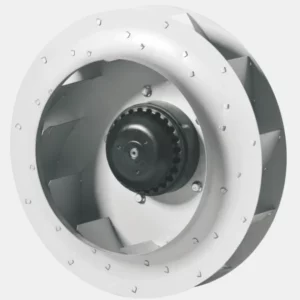Among the various types of centrifugal fans, the backbent centrifugal fan stands out as a versatile and efficient solution for enhancing air movement in a wide range of industries. With its unique design and performance characteristics, this type of fan finds applications in numerous settings where reliable and controlled airflow is crucial. In this article, we will explore the applications of backbent centrifugal fans, highlighting their benefits and explaining why they are chosen over other fan types in specific industries.
Understanding Backbent Centrifugal Fans
- Design and Function:
Backbent centrifugal fans, also known as backward curved centrifugal fans, are designed with curved blades that curve away from the direction of rotation. This configuration allows for efficient air movement, generating high-pressure airflow with lower noise levels compared to other fan types. The backward curved design also enables the fan to handle a wide range of airflow volumes without sacrificing performance. - Key Features:
Backbent centrifugal fans possess the following features:- Energy Efficiency: The backward curved blades and streamlined design minimize air resistance, resulting in higher efficiency and lower power consumption.
- High Static Pressure: These fans are capable of generating high static pressure, making them suitable for applications that require air movement against resistance, such as in duct systems or equipment cooling.
- Low Noise Levels: The curved blades and smooth airflow reduce noise production, making backbent centrifugal fans ideal for environments that require quiet operation.
Applications of Backbent Centrifugal Fans
- HVAC Systems:
Backbent centrifugal fans are extensively used in heating, ventilation, and air conditioning (HVAC) systems in commercial buildings, industrial facilities, and residential properties. They provide efficient air movement, delivering conditioned air to various spaces and ensuring proper ventilation. - Industrial Ventilation:
In industrial settings, where proper ventilation is crucial for maintaining air quality and controlling temperature and humidity, backbent centrifugal fans are employed. They effectively remove contaminants, such as dust, fumes, and gases, from the work environment, improving worker safety and comfort. - Air Pollution Control:
Backbent centrifugal fans play a vital role in air pollution control systems and environmental protection. They are used to extract or exhaust polluted air from manufacturing processes, laboratories, and other facilities, preventing the release of harmful substances into the atmosphere. - Process Cooling and Drying:
Backbent centrifugal fans are utilized in applications that require effective cooling or drying processes. They provide the necessary airflow to remove heat or moisture from industrial processes, ensuring efficient operation and product quality in sectors such as food and beverage, pharmaceuticals, and electronics manufacturing. - Dust Collection Systems:
The high static pressure capabilities of backbent centrifugal fans make them suitable for dust collection systems. They create the necessary suction to capture and transport dust particles from work areas to filtration units, improving air quality and reducing the risk of respiratory issues in various industries. - Energy Recovery Systems:
Backbent centrifugal fans are integrated into energy recovery systems, such as heat exchangers and air-to-air heat recovery units. These systems allow for the transfer of heat or energy from exhaust air to incoming fresh air, improving energy efficiency in buildings and industrial processes.
Advantages of Backbent Centrifugal Fans
- Energy Efficiency:
The streamlined design and backward curved blades of backbent centrifugal fans result in improved energy efficiency, reducing operational costs and environmental impact. - High Static Pressure:
Backbent centrifugal fans can generate high static pressure, enabling them to overcome resistance in duct systems or equipment, ensuring efficient airflow in challenging environments. - Quiet Operation:
The curved blades and optimized airflow path of backbent centrifugal fans contribute to reduced noise levels, making them suitable for noise-sensitive applications or environments. - Versatility:
Backbent centrifugal fans can handle a wide range of airflow volumes and resistances, allowing for flexibility in various applications and industries.
Backbent centrifugal fans offer a reliable and efficient solution for enhancing air movement in diverse industries. Their unique design, high static pressure capabilities, energy efficiency, and quiet operation make them indispensable in HVAC systems, backward curved centrifugal fan industrial ventilation, air pollution control, process cooling and drying, dust collection systems, and energy recovery systems. By harnessing the benefits of backbent centrifugal fans, industries can improve air quality, maintain optimal temperature and humidity levels, ensure worker safety, and enhance overall operational efficiency.
